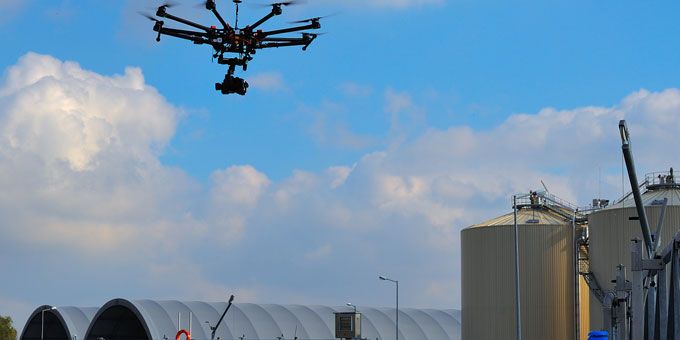Insurance companies already employ 17% of all commercial drones. Drones can play a part in all the stages of the insurance lifecycle, especially claims management and fraud prevention.
 How Drones Are Disrupting The Insurance Industry
How Drones Are Disrupting The Insurance Industry

Contributed by | Zimlon
The insurance industry is set to be one of the earliest adopters of drones because of the numerous benefits it offers, including better safety, efficiency, faster turnaround time, and reduced costs. Goldman Sachs estimates the global drone industry to reach $100 billion by 2020. Given that insurers today are struggling with an increasing amount of damage from natural disasters and fraud, plenty of insurance companies are aspiring to be data-driven organizations. PwC reported that drone technology could help the insurance industry save as much as 6.8 billion USD annually.
Insurance companies already employ 17% of all commercial drones. Drones can play a part in all the stages of the insurance lifecycle, especially claims management and fraud prevention. Drone powered solutions also help with real-time insights, risk monitoring, and assessment, as well as improving customer experience during catastrophes.
Risk Assessment
Drones can be used to gather data before a risk is insured, to help in preventative maintenance, and to assess damage after an event. They also allow insurers to engage a generalist, rather than a specialist, to perform field assessments and obtain high-quality visuals. The insurer can achieve significant cost savings through improved efficiency, generating the ROI for investing in drones. Insurers like State Farm are using their drones for property assessments.
Accelerate Claim Management
Insurance companies can assess damage quicker and more efficiently with drone operations by eliminating the need for multiple site visits. For example, a drone can help a claims adjuster process three houses in an hour, whereas without one, an adjuster could process only about three houses in a day (Farmers Insurance). Drones can increase inspection efficiency by up to 85%.
Fraud Reduction
In an analysis conducted by the Insurance Information Institute, fraud comprises about 10% of P&C insurance losses and loss adjustment expenses every year, which amounts to about $32 billion each year. Drones can particularly play a significant role while settling agricultural insurances, as they assess the actual yield and cultivable land. A drone can gather data on 500 to 1,000 acres in less than a day, thereby reducing the time it takes to settle claims- from days to hours. Using drones, Country Financial has been able to survey three times as many acres as an adjuster on foot and efficiently account for all of a customer’s crop damage. Even the automobile industry has a lot to gain. According to Verisk, in the automotive industry, insurers lose at least $29 billion annually in premium leakage. Drones, powered with location-based services, can help insurers collect more accurate data and patch up those leaks. Allstate insurance company is among the very first companies to employ the use of drones. The company depends on drones to conduct random inspections of vehicles and other insurable risks, thus saving time and resources.
Improving Customer Experience During Catastrophes
Inclement weather and challenging to reach locations, make it cumbersome for insurers to reach, which eventually results in delay and failure to resolve a large number of claims in a given time. Hurricanes and tropical storms make up around 40% of insured catastrophic losses. As seen in the aftermath of Hurricane Irma, 300 high-rise buildings were inspected by GFA Generali insurance using drones. The process took just ten days, whereas a ground crew of the same size would have taken months.
Employee Safety
When appraising property claims, claim adjusters typically encounter hazardous situations. Drone-mapping is a safer inspection method. Companies like Kespry are making drone roof inspection more efficient and safer by reducing their exposure to accidents and hazardous conditions.
The content & opinions in this article are the author’s and do not necessarily represent the views of RoboticsTomorrow
Featured Product

